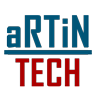Efficient management of the inspection process is critical for maintaining high standards and ensuring compliance in any organization. The ‘Inspection Item List’ in an ERP system is an invaluable tool for keeping inspections organized and streamlined. Here are a few key insights for consultants working with clients on inspection management:
- Ensure Documentation is Complete: Advise clients to attach all relevant documentation, such as manufacturing specifications and inspection results, to the inspection items. This will simplify future audits and reviews.
- Customize Inspection Levels: Different items may require different levels of inspection. Encourage clients to tailor their inspection types and templates based on the criticality of the item.
- Leverage Reports for Continuous Improvement: Inspection reports aren’t just for compliance. They provide valuable data that can highlight recurring issues and inform strategies for process improvement.
- Utilize Alerts and Attributes: The ability to add inspection alerts and attributes is crucial. It ensures that inspectors are notified of key considerations during the inspection process, reducing the likelihood of errors.
A well-structured inspection process helps organizations minimize defects, improve product quality, and maintain a strong reputation for reliability.
Step 1: Navigate to Inspection Item List #
Begin by accessing your Artintech ERP System through the login process. Once you’re logged in, proceed to the Inspection section by scrolling down in the menu. Click on the Inspection section to access the Inspection Item List. Afterward, click on it to access the Corrective Action/Preventive Action page.
Step 2: Review and Add an Inspection Item #
In this page, you will see the list of inspection items and can review your desired one. To add a new one, click the ‘New’ button on the upper right corner to navigate to the Inspection detail page.
By clicking the ‘X’ button besides the ‘New’ button, you can export the data into Excel to save it into the desired location on your computer.

Step 3: Fill in Inspection Detail #
Fill in all the necessary information such as Item Number, Item Description, Item Name, and Manufacturing Part #.
The ‘New’ button in the Attachment allows you to attach related documents.

Step 4: Fill in Inspection Type #
You will need to fill in Inspection Type detail such as Name, Inspection Level, Template…
To upload or download drawing files, use ‘Upload’ or ‘Download’ buttons.
You can add an inspection alert to Inspection Type using the ‘New’ button .
To add an attribute to Inspection Type, use the ‘Add Attribute’ button.
‘Add New Inspection Type’ button enables you to add an inspection type.
Step 5: Add an Inspection Report #
The ‘New’ in Inspection Report History table allows you to add an inspection report.
Step 6: Save the Inspection Item #
Once you have finished, click the ‘Save’ button to save the inspection item.





